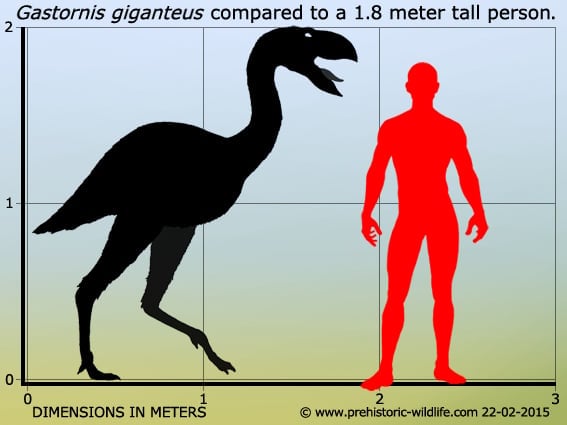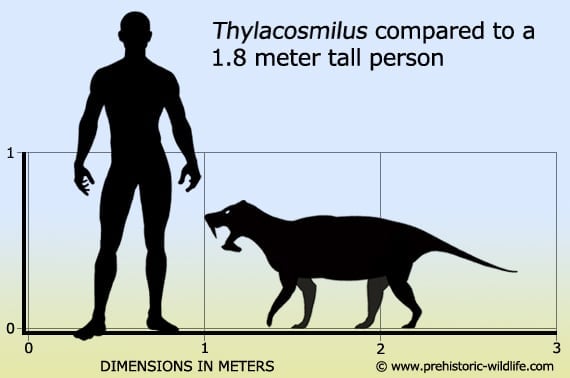|
|
Post by Talira Greycrest on Jul 6, 2021 1:17:50 GMT
Has what looks like a whale tail. Zygorhiza is an early whale. |
|
|
|
Post by Talira Greycrest on Jul 6, 2021 8:50:14 GMT
Name: EndothiodonPronunciation: En-do-thee-oh-donMeaning of name: "Inner tooth"Species: E. bathystoma, E. uniseries, E. whaitsi, E. mahalanobsiSize: Depending on species, estimated to have measured up to 2 metres long and weighing between 116 and 182kgs.Family: Endothiodontidae.Diet: Herbivore. Fed on low-growing vegetation.First fossils found: Known from numerous specimens discovered in India, Brazil and southern Africa. E. bathystoma named by English palaeontologist, Sir Richard Owen, in 1876. E. mahalanobsi named in 2000. Uncertain when the other two species were named.Lived: Depending on species, lived between 259.1 and 254.14 million years ago during the Wuchiapingian stage of the Late Permian in what is now Brazil, India and southern Africa.

|
|
|
|
Post by Joey12 on Jul 6, 2021 11:18:39 GMT
So I wonder what one day it transforms into?
|
|
Tix Mascot
Tech guru
Italy is my second homeland
Posts: 11,097  Mini-Profile Background: {"image":"http://4.bp.blogspot.com/-X5mhw13BJ7Y/TwKeZ3uM7YI/AAAAAAAABPw/D82go4Ny_8E/s1600/italy-background-8-787281.jpg","color":""}
Mini-Profile Text Color: 0ef8f1
Mini-Profile Name Color: f40d39
Year of Birth: 1961
Nationality: Norwegian
Mini-Profile Background: {"image":"http://4.bp.blogspot.com/-X5mhw13BJ7Y/TwKeZ3uM7YI/AAAAAAAABPw/D82go4Ny_8E/s1600/italy-background-8-787281.jpg","color":""}
Mini-Profile Text Color: 0ef8f1
Mini-Profile Name Color: f40d39
Year of Birth: 1961
Nationality: Norwegian
|
Post by Tix Mascot on Jul 6, 2021 18:01:13 GMT
It looks a little angry for a herbivore...
|
|
|
|
Post by Talira Greycrest on Jul 7, 2021 10:44:03 GMT
Name: Gastornis (also known as Diatryma)Pronunciation: Gas-tor-nissMeaning of name: "Gaston's bird", after French physicist, Gaston Planté.Species: G. gigantea, G. laurenti, G. parisiensis, G. sarasini, G. xichuanensis, G. geiselensis, G. russeli Size: The largest species, G. gigantea, stood around 2 metres tall and weighed more than 500kgs.Family: GastornithidaeDiet: Uncertain. Likely herbivorous.First fossils found: Known from several specimens discovered in central China, Belgium, France, Germany, England and the southwestern, northeastern and western United States. G. parisiensis named by E. Hébert in 1855. G. gigantea named in 1876. G. sarasini named in 1929. G. geiselensis named in 1978. G. xichuanensis named in 1980. G. russeli named in 1992. G. laurenti named in 2020. Gastornis was originally thought to have been carnivorous, however, recent research suggests it was more likely a herbivore.Lived: Depending on species, lived between 58.7 and 48.6 million years ago from the Thanetian stage of the Late Paleocene through to the Ypresian stage of the early Eocene in what is now England, Belgium, Germany, France, central China and the western, northeastern and southwestern United States.
|
|
|
|
Post by Joey12 on Jul 7, 2021 11:08:37 GMT
Sure it's angry all the others are eating his food.
|
|
|
|
Post by Talira Greycrest on Jul 8, 2021 12:17:59 GMT
Today's entry is a tiny insect, a genus of planthopper: Name: TainosiaPronunciation: Tien-oh-se-ahMeaning of name: Named after the Tainos people who were native to the island of Hispaniola where its fossils were discovered.Species: T. quisqueyaeSize: 14.4mm longFamily: Nogodinidae.Diet: Herbivore.First fossils found: Known only from a single, mostly complete, specimen discovered in the Dominican amber deposits on the island of Hispaniola. Named by Jacek Szwedo and Adam Stroinski in 2001.Lived: 20.43 to 15.97 million years ago during the Burdigalian stage of the Early Miocene in what is now the Dominican Republic.
tinyurl.com/yeltrpkkCheck out this link for a pic of the fossil! |
|
|
|
Post by Joey12 on Jul 9, 2021 5:15:13 GMT
Was : Gastornis (also known as Diatryma) a flight less bird or do they know?
|
|
|
|
Post by Talira Greycrest on Jul 9, 2021 8:53:06 GMT
Name: NotostylopsPronunciation: No-toe-sty-lopsMeaning of name: "South pillar face"Species: N. murinus, N. appressus, N. pendens, N. pigafettaiSize: 30cm long.Family: NotostylopidaeDiet: Herbivore. Fed on low-growing vegetation.First fossils found: Known from specimens discovered in the Sarmiento, Casamayor, Andesitas Huancache and Koluel Kaike Formations of Argentina. N. murinus named by Argentinian palaeontologist, Florentino Ameghino, in 1897. N. pendens named in 1901. N. appressus named in 1902. N. pigafettai named in 1948.Lived: Depending on species, lived between 48.6 and 37.2 million years ago from the Ypresian stage of the Early Eocene through to the Priabonian stage of the Late Eocene in what is now Argentina.
-738x591.jpg)
|
|
|
|
Post by Joey12 on Jul 9, 2021 9:53:17 GMT
Yikes it looks like a long legged rat.
|
|
|
|
Post by Talira Greycrest on Jul 10, 2021 7:40:21 GMT
Name: ThylacosmilusPronunciation: Thy-la-co-smy-lussMeaning of name: "Pouched sabre".Species: T. atroxSize: Measured around 1.2 metres long, 0.5 metres tall and weighing up to 120kgs.Family: Thylacosmilidae.Diet: CarnivoreFirst fossils found: Known from several partial skeletons, the first of which were discovered in the Ituzaingó Formation of Catamarca Province, northern Argentina, in 1926. Named by American palaeontologist, Elmer Samuel Riggs, in 1933. With its oversized canine teeth, Thylacosmilus appears to be very similar to sabre-toothed cats, but it's actually a marsupial.Lived: 6.8 to 3 million years ago from the Messinian stage of the Late Miocene through to the Piacenzian stage of the Late Pliocene in what is now northern Argentina.
|
|
|
|
Post by Joey12 on Jul 10, 2021 10:50:37 GMT
Looks mad !!!
|
|
|
|
Post by Talira Greycrest on Jul 11, 2021 13:15:33 GMT
A freshwater whale: Name: RemingtonocetusPronunciation: Rem-ing-ton-see-tusMeaning of name: "Remington's whale", after American naturalist, Arthur Remington Kellogg.Species: R. harudiensis, R. domandaensisSize: Estimated to have measured around 3.4 metres long. Weight uncertain.Family: Remingtonocetidae.Diet: CarnivoreFirst fossils found: Known from several specimens discovered in the Harudi Formation of India and the Domanda Formation of Pakistan. R. harudiensis (originally named as a species of Protocetus in 1975) named by Ashok Sahni and K. Kumar in 1986. R. domandaensis named by Philip D. Gingerich in 2001.Lived: 48.6 to 40.4 million years ago from the Ypresian stage of the Early Eocene through to the Bartonian stage of the Middle Eocene in what is now Pakistan and India.
 |
|
|
|
Post by Talira Greycrest on Jul 11, 2021 13:31:55 GMT
Was : Gastornis (also known as Diatryma) a flight less bird or do they know? Yes, Gastornis was flightless. It had wings, but they were too small to be used for flying. |
|
|
|
Post by Talira Greycrest on Jul 12, 2021 10:36:10 GMT
Today's entry is a prehistoric freshwater stingray: Name: HeliobatisPronunciation: Hel-ee-oh-ba-tissMeaning of name: "Sun ray"Species: H. radiansSize: Between 8 and 90cm long, though the average length is between 30 and 40cm. Weight uncertain.Family: Dasyatidae.Diet: CarnivoreFirst fossils found: Known from several specimens discovered in the Green River Formation of Wyoming. Named by American palaeontologist, Othniel Charles Marsh, in 1877. Like modern stingrays, Heliobatis had venomous barbs on its tail and the genders were dimorphic (males had claspers, females didn't).Lived: 50 million years ago during the Ypresian stage of the Early Eocene in the lakes and rivers in what is now southwest Wyoming.

|
|